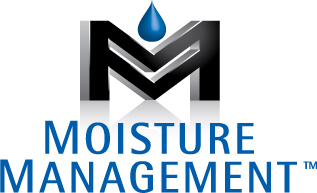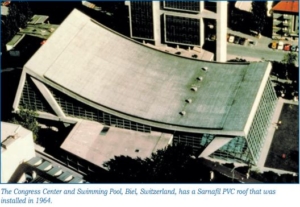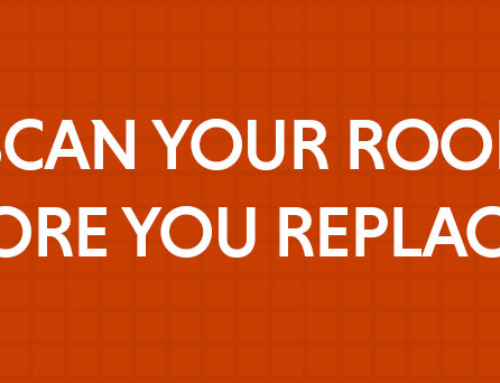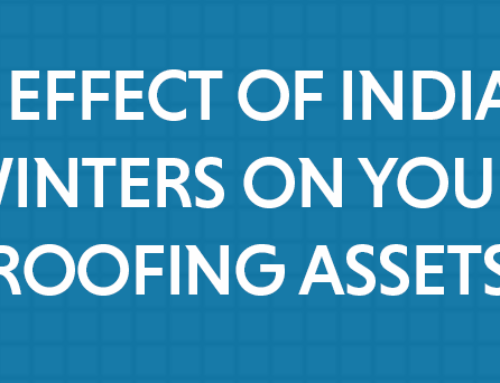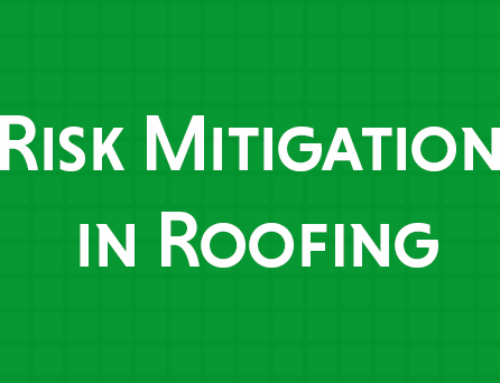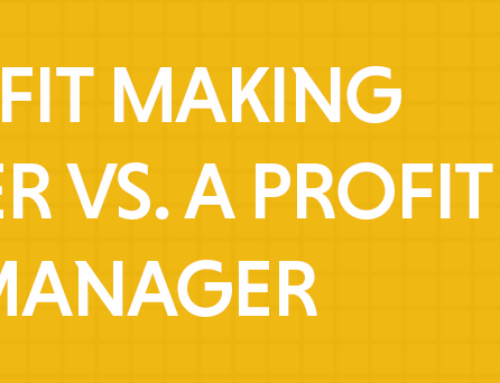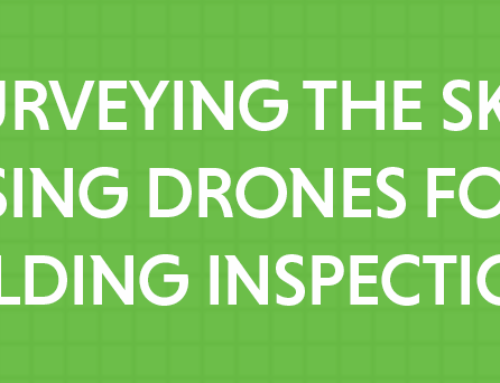This article is directed to all building owners, property managers, design professionals, and facilities maintenance managers who have purchased warranties on commercial or industrial buildings in the U.S. within the past twenty years. Whether you realize it or not, you are probably in violation of your current warranty terms and conditions. As such, you are operating under a sense of false security that your roof is covered under a warranty program and that you have little to no risk or obligation. This is clearly not the case.
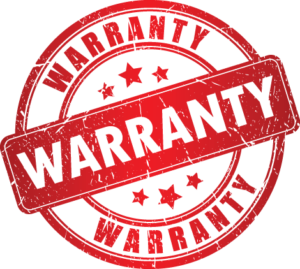 In this area of facilities roofing maintenance, ignorance is not bliss and what you don’t know about this issue could cost you and your company dearly. The bottom line is that manufacturers make it clear today in their warranty agreements that building owners are responsible for implementing a pro-active roof maintenance initiative, in order for the manufacturer to honor their warranties. It is not difficult for manufacturers to prove when this maintenance effort is not being performed, or there has been owner abuse or negligence, and can therefore easily opt out of their warranty agreements. This action by the manufacturers leaves the building owner stunned and angry, having a potentially large risk exposure and large capital or expense outlay to address problems with little advance warning. Let’s spend a few minutes clearing up the myths about warranties and laying out some basic ground rules and suggestions for how to remedy this problem.
In this area of facilities roofing maintenance, ignorance is not bliss and what you don’t know about this issue could cost you and your company dearly. The bottom line is that manufacturers make it clear today in their warranty agreements that building owners are responsible for implementing a pro-active roof maintenance initiative, in order for the manufacturer to honor their warranties. It is not difficult for manufacturers to prove when this maintenance effort is not being performed, or there has been owner abuse or negligence, and can therefore easily opt out of their warranty agreements. This action by the manufacturers leaves the building owner stunned and angry, having a potentially large risk exposure and large capital or expense outlay to address problems with little advance warning. Let’s spend a few minutes clearing up the myths about warranties and laying out some basic ground rules and suggestions for how to remedy this problem.
BACKGROUND
The commercial/industrial roofing industry has moved through numerous phases of evolution over the past half century. In the mid-1900’s, the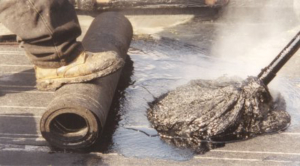 roofing industry was fairly simple, with limited system choices and design parameters to consider. Buildings were constructed with fairly substantial decking systems (limited use of insulation within the roofing assembly) and typically two choices of roofing membranes systems – coal tar built-up roofing or asphalt built-up roofing. At this time, a commercial roofing warranty was usually offered with a two to five year limitation on these types of systems, despite the fact these roofs often lasted for decades.
roofing industry was fairly simple, with limited system choices and design parameters to consider. Buildings were constructed with fairly substantial decking systems (limited use of insulation within the roofing assembly) and typically two choices of roofing membranes systems – coal tar built-up roofing or asphalt built-up roofing. At this time, a commercial roofing warranty was usually offered with a two to five year limitation on these types of systems, despite the fact these roofs often lasted for decades.
As we moved into the early 1970’s, the oil embargo changed the availability and cost of these systems, and this opened the door for the Europeans (initially the Germans) to begin marketing and exporting their flexible PVC single ply roofing membrane technology into the U.S. marketplace. This oil shortage also impacted energy costs and the design community began to change the components of the flat roofing system to include one or more layers of roofing insulation between the decking and the waterproofing membrane system. This created numerous challenges in both the design and installation of these systems, as well as in their long-term performance characteristics. Despite these challenges and downturns in actual performance and longevity, these systems were typically sold with a five to ten year warranty. These warranty programs were favorably embraced by building owners and designers and gave this new technology a strong foothold into the U.S. market.
Throughout the remainder of the 70’s and 80’s this single ply segment grew in alternative system types (e.g.- CSPE – Hypalon, CPE, PVC Alloys, Neoprene, EPDM Rubber, and others). Also during this period a “marketing war” developed among the manufacturers competing to offer the longest warranties and guaranties (from 10 years, to 12 years, to 15 years, to 20 years, all the way up to 25 years plus in some rare cases). Ironically, as the warranty terms expanded, the prices dropped, and the vast majority of these manufacturing companies went bankrupt or sold off their interests.
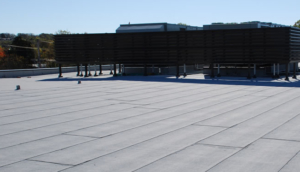 Then in the mid 80’s and throughout the 90’s a new system technology, the modified bitumen membrane roofing system, emerged that began to take a foothold and rapidly gain market share. For simplicity sake we can characterize this system type as a high-tech factory fabricated built-up roofing system. Again the marketing wars continued, with the premier roofing systems offering 10 and 20 year warranty terms.
Then in the mid 80’s and throughout the 90’s a new system technology, the modified bitumen membrane roofing system, emerged that began to take a foothold and rapidly gain market share. For simplicity sake we can characterize this system type as a high-tech factory fabricated built-up roofing system. Again the marketing wars continued, with the premier roofing systems offering 10 and 20 year warranty terms.
A GOOD NEWS / BAD NEWS STORY EVOLVES
During the past decade, the roofing industry learned that they have dug themselves a hole with their customers relative to their warranty expectations. For the most part, building owners have rarely been proactive with their industrial/ commercial roofing assets. It has always been an “out of sight – out of mind” management philosophy. Consequently, building owners have, by default, abdicated the responsibility for their roofs to their manufacturer and warranty coverage. Unfortunately, in doing so, the building owners have been somewhat careless, and in some cases, reckless with their facilities’ maintenance and management programs concerning their roofing systems. Damages and roofing warranty claims rose significantly in the U.S. during this period. However, due to the vast majority of the roofing system manufacturers using this warranty theme as their major marketing thrust, they felt compelled to continue with these programs, but to revise the “fine print” in their terms and conditions sections. These newly created “terms and conditions” sections began to make reference to the building owners having the responsibility to implement a pro-active roof maintenance program for their roofing systems, in order for their warranties to remain intact.
WHAT YOU DON’T KNOW CAN HURT YOU!
For purposes of demonstrating the point outlined above, relative to the explicit responsibilities of the building owner to provide pro-active roof maintenance, we offer the following sample extracts from several major roofing manufacturers roofing warranties “Terms & Conditions” sections:
CARLISLE SURE SEAL® MEMBRANE SYSTEM WARRANTY
TERMS, CONDITIONS, LIMITATIONS
This Warranty shall not be applicable if, upon Carlisle’s inspection, Carlisle determines that any of the following has occurred:
- b. The Carlisle Membrane System is damaged by any intentional or negligent acts, accidents, misuse, abuse, vandalism, civil disobedience, or the like.
- c. Deterioration or failure of building components, including, but not limited to, the roof substrate, walls, mortar, HVAC units, etc., occurs and causes a leak or otherwise damages the Carlisle Membrane System.
This Warranty shall be null and void if any of the following occur:
- a. If, after installation of the Carlisle Membrane System by a Carlisle Authorized Roofing Applicator there are any alterations or repairs made on or through the roof or objects such as, but not limited to, structures, fixtures, or utilities are placed upon or attached to the roof without first obtaining written authorization.
- b. Failure by the Owner to use reasonable care in maintaining the roof, said maintenance to include, but not be limited to, those items listed on Carlisle’s Care & Maintenance Information sheet which accompanies this Warranty.
FIRESTONE RED SHIELD WARRANTY
TERMS, CONDITIONS, LIMITATIONS, AND DEFINITIONS
- Firestone shall have no obligation under this Limited Warranty, or any other liability, now or in the future if a leak or damage is caused by:
(c) Failure by the Owner to use reasonable care in maintaining the System, said maintenance to include, but not be limited to those items listed on the reverse side of this Limited Warranty titled “Firestone Roofing Care and Maintenance.”
FIRESTONE ROOFING CARE AND MAINTENANCE
Congratulations on the purchase of a Firestone Roofing System! Your roof is a valuable asset and as such should be properly maintained. All roofs and roofing systems require periodic maintenance to perform as designed and to keep your Limited Warranty in full force and effect.
A listing of nine (9) detailed pro-active roof maintenance protocols and requirements are then listed on this full-page document.
Firestone feels that the preceding requirements will assist you, the building owner, in maintaining a watertight roof for many years. Remember, your roof is an investment. To maximize your return on this investment, maintenance is essential.
GAF MATERIALS CORPORATION – LIBERTY GUARANTEE
OWNER’S RESPONSIBILITIES
In the event of a leak through the GAFMC Roofing Materials, the Owner must notify the GAFMC Contractor Services Department in writing within thirty days after discovery of the leak. The roofing contractor is NOT an agent of GAFMC: notice to the roofing contractor is NOT notice to GAFMC (see below)
The Owner shall, at its expense, (a) perform regular inspections and maintenance during this Guarantee. (b) keep records of all inspections and maintenance performed, and (c) perform repairs to the roof or the other building components identified during inspections by GAFMC as being necessary to preserve the integrity of the GAFMC Roofing Materials. Failure of the Owner to perform this work promptly following written notification by GAFMC may result in cancellation of this guarantee if the Owner’s failure results in damage to the GAFMC Roofing Materials.
SARNAFIL 15 YEAR STANDARD WARRANTY FOR COMMERCIAL BUILDING
TERMS, CONDITIONS, LIMITATIONS
- Owner shall confirm each leak event to Sarnafil in writing within thirty (30) days of the discovery of each leak in the Roofing System.
This warranty does not apply and may be null and void if any of the following occur:
- d. There are any alterations or repairs made on or through the completed roof, or objects such as but not limited to fixtures, equipment, or structures are placed on or attached to the completed roof without first obtaining written authorization from Sarnafil.
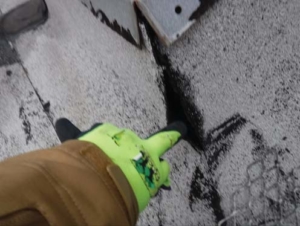 As you can see from the above warranty language, the question of what are YOUR responsibilities as a building owner under these various representative agreements should be abundantly clear. You must implement a pro-active roof maintenance service program and you must report problems with your roofing system back to your manufacturer in a detailed and timely manner. It should be noted here also that we have not singled out manufacturers that have more aggressive warranty requirements (there are many with more stringent language), but rather a sampling of some of the more well known roofing manufacturers in the industry today.
As you can see from the above warranty language, the question of what are YOUR responsibilities as a building owner under these various representative agreements should be abundantly clear. You must implement a pro-active roof maintenance service program and you must report problems with your roofing system back to your manufacturer in a detailed and timely manner. It should be noted here also that we have not singled out manufacturers that have more aggressive warranty requirements (there are many with more stringent language), but rather a sampling of some of the more well known roofing manufacturers in the industry today.
WHAT ARE MY BEST OPTIONS?
In circumstances like this you have to make one of two choices:
- You are either going to do something to protect your assets (or)
- You are not.
If you chose the latter, you are gambling that the roofing system will perform flawlessly and you will never need to call on the manufacturer to perform work under the warranty coverage. If you chose to protect your roofing asset and honor the terms of the warranty, you must develop and implement a pro-active roof maintenance program on your facility roof.
In today’s business climate where companies have downsized and have fewer human resources to address these types of special needs, many companies are outsourcing these types of programs. Typically, these roof maintenance services are more competently and efficiently performed by a qualified roofing maintenance professional, and in the process it usually proves to be less costly to the building owner.
Roof maintenance is not a hobby, and it takes more skill and training for a roofing technician to find roof leaks and deficiencies and then to properly and thoroughly fix them than it typically does to build the roof during new construction or re-roofing. Not only does it take a skilled and experienced work force to do the work, but also it takes the dedication and commitment of the roofing contracting organization to be focused on this service and to set up separate operating divisions that specialize in these types of services.
DON’T BE REACTIVE TO CRISIS ROOF MANAGEMENT – ADOPT A PRO-ACTIVE ROOF MANAGEMENT PHILOSOPHY
I clearly understand that most facilities maintenance budgets are limited. It is the classic “Tons of Problems, but only Pounds of Money” scenario. However, it is important to realize that you can actually reduce your overall life-cycle roofing expenditures if you adopt a pro-active roof management approach.
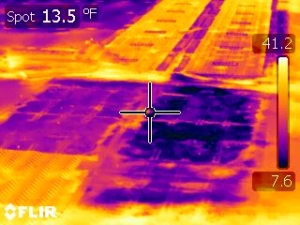 Modeling the Deming Thesis that “Quality is Free”, the alternative to a pro-active roof management program is a much more costly crisis roof maintenance approach. Remember to factor in the related added costs of poorly performing roofs, such as: interior building damage, damaged equipment and inventories, damaged structural components, energy waste due to wet insulation, lost use of interior space, equipment damage and shut downs, employee productivity and morale issues, safety exposure with OSHA, and slip and fall lawsuits. If you add the loss of your warranty protection as another consequence, the benefits of proactive maintenance greatly outweigh the costs.
Modeling the Deming Thesis that “Quality is Free”, the alternative to a pro-active roof management program is a much more costly crisis roof maintenance approach. Remember to factor in the related added costs of poorly performing roofs, such as: interior building damage, damaged equipment and inventories, damaged structural components, energy waste due to wet insulation, lost use of interior space, equipment damage and shut downs, employee productivity and morale issues, safety exposure with OSHA, and slip and fall lawsuits. If you add the loss of your warranty protection as another consequence, the benefits of proactive maintenance greatly outweigh the costs.
Now that you have learned a bit of the history of warranties, seen the evidence of typical warranty requirements, and can better appreciate the risk exposure that you face, you should be compelled to develop an action plan. With the current availability of roof management software and annual maintenance service contracts in the marketplace, there is no longer an excuse for not getting a better handle on this area of facilities maintenance. The good news is that with some planning and awareness, you can protect your warranty, extend the life of your roofing assets, reduce leaks into your facilities, and gain long-term savings by implementing a maintenance plan that meets your manufacturers warranty requirements.
